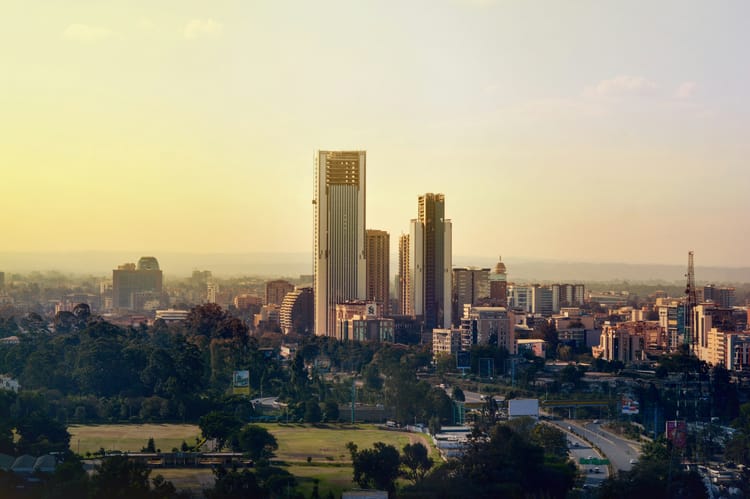Unlocking a renaissance in sustainable finance: The power of master learning and innovation cycles

This is a guest article written by Manju Seal, Managing Partner and Founder of Terra Impact and former Head of Sustainable Finance and Capital Markets ESG Lead at Bank of Montreal.
Sustainable finance is at an inflection point. As a cornerstone of the global capital markets, it helps drive the transition to low-carbon economies while addressing both social and environmental priorities. In 2024, cumulative global green, social, sustainability, and sustainability-linked (GSS+) debt reached US$6.9 trillion, with US$5.7 trillion (83%) meeting rigorous alignment standards – a testament to the market’s rapid growth and appetite for thematic debt.
The market’s scale and momentum are undeniable since the first green bond was issued in 2007: 2024 saw a record US$1.05 trillion in aligned GSS+ deals priced – a 31% year-on-year increase – with green bonds accounting for two-thirds (US$672 billion, up 9.4% YoY). Social and sustainability bond issuance also surged, up 20.6% to US$373.9 billion, with sustainability bonds alone growing 32% to US$206.3 billion. Yet, despite this growth, aligned GSS+ debt still represents only about 4% of total global debt issuance, highlighting the need for greater product diversity, faster adoption and innovation.
The urgency of climate change, biodiversity loss, and persistent inequality is clear, but our sector’s response remains fragmented and incremental. While GSS+ bonds, Green Loans, ESG integration, and Debt for Nature Swaps have mobilized capital and raised awareness, the pace and breadth of innovation still falls short of what’s needed. If we are to truly deliver on the promise of sustainable finance, we need to fundamentally rethink how we innovate, learn, and – most importantly – develop as master learners.
Sustainable finance needs innovation cycles
Our industry has relied too long on established financial products such as bonds, repurposing them to fit complex challenges (see table below). Historically, the finance industry has demonstrated a strong aversion to risk, focusing primarily on the efficient distribution of wealth and the flow of capital. It has not been known for a capacity to develop innovative financial products, especially with the speed required today to address persistent planetary challenges. Given the evolving demands of sustainable development, it is now imperative to introduce greater rigor and creativity into the design of financial solutions.
Table: Sustainable finance bonds
It took a global pandemic to propel social bonds from a first issuance in 2006 to a widely issued product in capital markets. Yet we should not wait for catastrophes or crises to spur the creation and acceptance of new products, as developing and scaling effective financial solutions takes time and foresight.
One lesson we can borrow from high-innovation industries like technology, medical devices, transportation and logistics is the value of prototyping, iterative development, and regulatory sandboxes. In sustainable finance, this could mean piloting new instruments for targeted environmental or social challenges in real-world settings, gathering feedback, and refining before scaling. This approach not only accelerates innovation but also avoids the pitfalls of greenwashing by ensuring that products deliver measurable impact and can be adopted by many. Case in point: sustainability-linked loans have dwindled since 2023 primarily due to lack of transparency and greenwashing concerns. Our industry faces significant reputation risk, and the adoption of new products is slow.
Critical role of master learning
At the heart of any transformation is the capacity to learn – individually and collectively. Master learners in sustainable finance are those who are not only committed to lifelong learning but are also self-regulated, seeking out diverse sources of knowledge and adapting their approaches as new information emerges. This adaptability is especially vital as practitioners will, increasingly, need to draw on multiple disciplines and keep pace with rapidly evolving challenges, such as the rise in natural disasters. Such a growth mindset is essential for navigating the complexity and uncertainty that define our field. By fostering deep understanding, curiosity, critical thinking, and adaptability, we ensure that innovation is both meaningful and resilient.
Radical collaboration is still lacking
Despite all the discussion about systems thinking and holistic approaches, the reality is that the top experts from different fields have not yet come together in great numbers to drive sustainable finance forward. Institutional silos, disciplinary jargon, and competing incentives continue to limit our ability to build the kind of interdisciplinary teams that are needed. Too often, innovation happens in pockets – within a single institution, sector, or geography – rather than through the kind of broad-based collaboration that could truly move the needle.
This lack of radical collaboration is a missed opportunity. Imagine what could be achieved if climate scientists, financial engineers, policymakers, technology innovators, and community leaders worked side by side to design new solutions, set standards, and measure impact. This kind of interdisciplinary synergy is already recognized in STEM research as a driver of groundbreaking discoveries and industry revolutions. The complexity of the problems we face demands nothing less. True systems thinking – where the whole is greater than the sum of its parts – requires us to convene and catalyze capital, expertise, and creativity from across the spectrum.
Recommendations:
- Make master learning a core value: Encourage everyone in the ecosystem – investors, issuers, regulators, and civil society – to adopt a mindset of continuous learning, self-regulation, and openness to diverse learning sources.
- Foster cross-sector learning: Encourage knowledge sharing across borders and sectors in real-time, leveraging the experiences of leading countries and institutions.
- Create prototyping environments and regulatory sandboxes: Dedicated labs and pilot programmes are needed where new sustainable finance products can be tested, refined, and scaled with input from a diverse set of stakeholders.
- Institutionalize iterative learning: Build feedback loops into product development and decision-making, so that lessons learned are captured and applied in real-time.
Sustainable finance has made great strides, but the journey is far from over. We need the best creative thinkers from capital markets, academia, digital innovation, regulation, and grassroots organizations to come together with greater intent and in greater numbers than ever before. The process of developing and scaling new financial products is still too slow, often hindered by regulatory complexity, sluggish pace and a lack of diverse expertise at the table.
Unlocking a true renaissance in our field will require us to embrace master learning and the innovation cycles that have transformed other industries. Most importantly, we must bring the leading innovators from across disciplines together, not just in theory but in practice. Only then can we hope to develop the robust, scalable solutions needed to address the world’s most pressing challenges – and to do so with the urgency they demand.







Member discussion